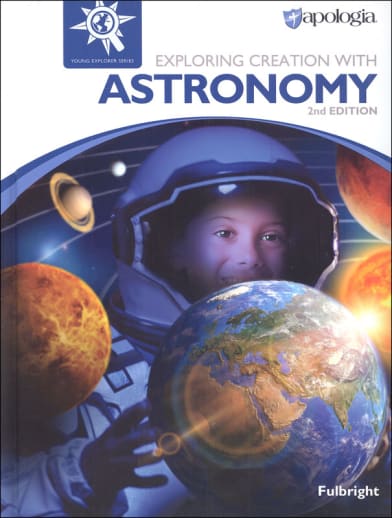This book is now in 2nd ed. and chapters include What is Astronomy, The Sun, Mercury, Venus, Earth, The Moon, Mars, Space Rocks, Jupiter, Saturn, Uranus, Neptune, Kuiper Belt and the Dwarf Planets, and Stars, Galaxies, and Space Travel. The last few chapters are where you see a change in the chapter sequence from the first edition chapters 11 and through 14. There are still interesting activities and projects including a model solar system made of balloons, pinhole eclipse viewing box, making a compass, understanding the moon phases, and creating an astrometer. Children are sure to remember the information they are learning between hearing the text, performing the hands-on activities, and completing the journal pages.
The text is formatted differently from first edition it begins with an explanation of the text, activities, course website, and notebooking journals. Each lesson is full of new photography and illustrations and interspersed with scripture. Blue "Think about this and "Wisdom from Above boxes give special attention to the Creator, and orange questions are scattered throughout the lessons for students to think about and explain. Activities for each lesson include instructions and illustrations for completion. Every chapter is rounded out with "What do you Remember? where students recall information from the lesson. The appendices include a lesson-by-lesson supply list for hands-on activities and an answer key for "What do you Remember? questions.
Notebooking journals are now in full color and color-coordinated. A suggested schedule is in the front of each notebooking journal, but you decide how many times a week to do your curriculum. The schedule lists daily assignments (71 total), and the lists have items listed in 3 different colors green for textbook reading assignments, blue for notebook assignments, and brown for science kit activities. Pages in the notebooking journal are formatted for students to answer questions and complete activities. A review of the inner planets now follows lesson 8, review of the outer planets follows lesson 12, and a final review follows lesson 14. "Take it Further pages are now drawing, making lists of books you've read, movies you've watched, additional experiments you may have completed, and making scrapbooking pages. Copywork is still included and coloring pages in the junior notebooking journals. There are answer keys in the back for vocabulary crossword puzzles and final review questions.
Because of the content changes, first edition products won't work with the 2nd edition.
The Textbook and Regular Notebooking Journal have been reprinted with new, updated covers. The content is essentially the same except the reference to the Astronomy Lab Kit has been removed. At this time, the Junior Notebook has not been updated.
